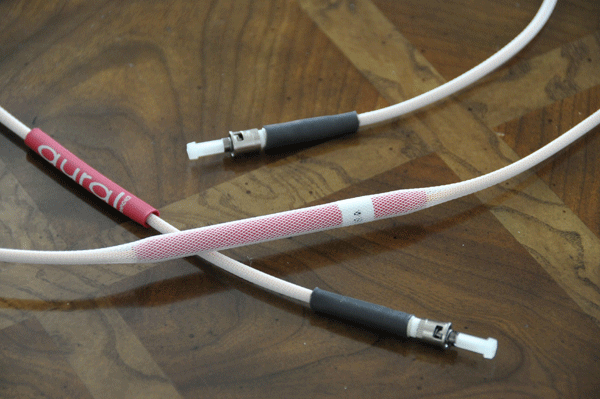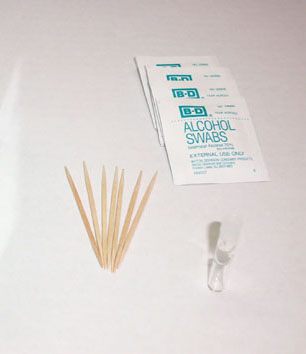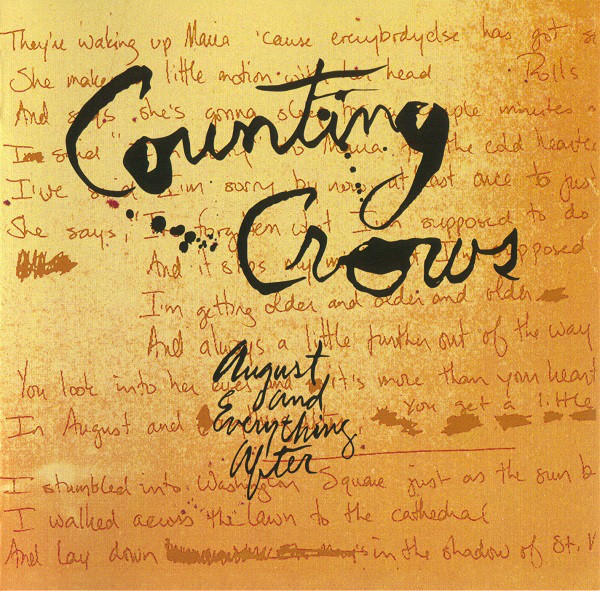While there is any number of superb digital units in today’s market, I continue to use an EMM Labs TX2 transport in conjunction with the companion DA2 D/A converter, with which I have been extremely happy. Other units may, in certain areas, have small advantages, but none when taken as a whole is better or offers a more natural, organic sound. I have of late frequently questioned whether the EMM proprietary Meitner link and the provided orange optical cable is the best way to link the TX2 to the DA2. In the context of playing SACD’s, the only way, due to SACD licensing requirements, to transmit data at a higher bit rate than two times Red Book, between the TX2 and the DA2, is to use the proprietary Meitner optical link. I have verified this by substituting an AES/EBU cable. When playing SACD’s, there was a noticeable loss in information, particularly at higher frequencies. Note that this is not an issue with downloads or streaming.
About a year ago, Andy Yuen (Singapore) a reader with whom I have corresponded for several years strongly suggested that I try the Aural Symphonics Lotus Optimism optical cable for use with the Meitner TX2/DA2. I must admit that I had misgivings and for the next year resisted taking his advice; however, he eventually wore me down and I purchased the cable from the Cable Company. So, the question becomes how does the Optimism differ sonically from the orange optical cable which EMM provides and is the sonic difference sufficient to justify the price. If you are using the EMM streamer in conjunction with one of their D/A converters, then using the Lotus Optimism will have similar effects to its use with the transport.
Nuts and Bolts
Many seem to think that all optical cables are the same and sound alike. Unfortunately, that is simply not the case. In particular, how the cable is terminated and how the ends are treated is key to the sound. Aural Symphonics optical cable ends are highly polished and they make a point in their installation instructions to stress that the ends must be handled with extreme care to avoid abrading or otherwise damaging the polished surface. Likewise, they include with each cable an optical matching gel (“ioGEL”) to further ensure the integrity of the interface with the component. If you use camera lenses as an analogy, this makes sense. The material from which the lens is made, its freedom from imperfections/impurities, and the precision with which the lens is ground and polished determine how well the lens works. Another significant issue is bandwidth. In designing the Optimism cable Aural Symphonics matched the bandwidth to that of EMM’s wide bandwidth multi-mode receiver in the DA2 which ensures optimum data transmission. The standard AT&T transceiver unit is a single mode device. From our correspondences, Ed Meitner, president of EMM Labs, opined that the real issue is single mode versus multi-mode with the latter being superior with less measurable error.
The cable is also marked for directionality, although Aural Symphonics suggest experimentation.
Per Tommy Dzurak of Aural Symphonics:
“The application and standard of use in high end audio is multi-mode fiber, optical transcievers.
No audio company currently uses single-mode. Theta Digital used single-mode 20+ years ago with limited success. The end connectors would be different in single-mode, as in a screw type connector, not ST/ST bayonet twist lock as in
multi-mode. There is no audible advantage for single-mode application in hifi… multi-mode used by WADIA, Theta
Digital, EMM Labs, to name a few, is the standard of high performance digital data transfer. Measurable error is extremely low with multi-mode; it’s the circuits and data with gross errors, not final implementation of output/input via single-mode… in addition, long optical cables simply sound awful, we stop at 2.00 meter, none shorter or longer.”
Listening
Eight familiar CD’s and SACD’s were selected and then played with the TX2 (transport) and DA2 (D/A converter) first connected with the orange cable which EMM provides and then substituting the Aural Symphonics Optimism Lotus.
EMM: This sounds fantastic with images mainly between speakers. Becker’s voice is very clean. The chanters go beyond the speakers. Bass is a little light. The guitar on track 3 is also a little light and not as colorful as I recall from listening to this on headphones.
Optimism: The playback is much cleaner, more detailed, mostly to the good. Words are clearer in “Junkie Girl” and have the emotional impact they need to have. Track 3 is the same as to voice and lyrics and the words are, again, key. The balance makes more sense as well. The somewhat anemic guitar comes out stronger, albeit with lean bass. The intermittent chanting is more clearly there in at least one place where I completely missed it before. It’s just a different experience: more intimate, as I had experienced on headphones with this particular record (Audeze and others). The kind of experience, I think, most of us want.
EMM: The soundstage is wider than on the Becker CD, somewhat beyond the speakers. Guitars are superb as a group on both sides of the stage and middle, a sea of guitars effect. You can hear individual guitars as well as the combined effect, but this could be better at hearing each guitar. I think there are three. Backup vocals are there, but enunciation is not great. Anna begins…track 5. The same effect with the guitars, but you can hear detailed emotional delivery in the voice. The stage is very wide with the piano very far out left, but not much depth.
Optimism: The improvement is immediately apparent. The snare has rim shot crack we want to hear, and bass drum, in quiet moments, resonates in its interior. There is more definition among the guitars, without losing the “sea of guitars” effect. Every word of the singer (almost) is clean and clear, and his enunciation is emotive. The background singers are also clean and clear. And, before I hadn’t really noticed the bass part toward the end. 5th – the same. Sounds like a different drummer (which it is). Needs a lot of detail in the vocals to get to the emotional center of the song, and it’s there.
- (Page 1 of 2)
- Next page →









Very interesting to create A+ batches. Also good to know the 2 meter length is ideal for audio systems. I was told the length does not matter, but we can see experimentation is necessary for best sound quality.
I plan to try one of these on a bel canto set up.
I appreciate your comments. This is an exceptional product but must be used correctly with the proper amount of the supplied optical gel. Too little or too much degrades the performance. Likewise directionality is important. Just follow the instructions.